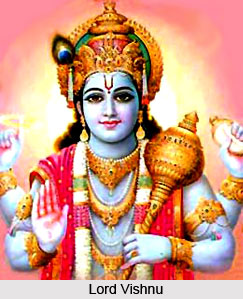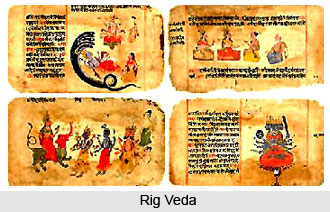 Vedic Period is the age of new culture, several developments occurred during that period in the society. In India, a completely new culture and civilisation emerged during the 1500 BC-600 BC. The country had been an observer of the several developments of culture and society since the early Bronze Age.
Vedic Period is the age of new culture, several developments occurred during that period in the society. In India, a completely new culture and civilisation emerged during the 1500 BC-600 BC. The country had been an observer of the several developments of culture and society since the early Bronze Age.
The popularly known urban civilisation of Indus Valley collapsed due to several features including various foreign invasions. Historians view that with the coming of the Aryans, the Indus and Harappan culture ruined. The age of the Aryans are termed as the Vedic Period. The Aryans entered India from Central Asia through the Khyber Pass between B.C. 2000 and B.C. 1500. It is a period during which the Vedas were being constructed.
The epoch was also identified as the Vedic Period because the four Vedas formed the very essence of the age. There are four Vedas- Rig Veda, Sama Veda, Yajur Veda and Atharva Veda which form the main literary sources for this Vedic era.
Vedic Period saw the upsurge of monolithic religion. The Vedic Religion is the predecessor to modern Hinduism. The religious practice of the early Vedic period was in the form of nature worship. The approach of worship in the Vedic age incorporated performance of sacrifices and the chanting of Rigvedic verses, singing of Samans and offering of mantras (Yajus).
 A method of Ashram system prevailed in the Vedic Period. Four Ashrams of Vedic Life were included and it was done with a view to offer individual ideas on both Karma and Dharma. Social Life in Rig Vedic civilization was characterised by a nomadic lifestyle. Agriculture and cattle rearing were the main occupation of the society. The grama (wagon train), vish and jana were political divisions of the early Vedic Aryans. A vish was a subdivision of a jana or "krishti", and a grama was a smaller unit than the other two. The leader of a grama was called gramani and that of a vish was called vishpati.
A method of Ashram system prevailed in the Vedic Period. Four Ashrams of Vedic Life were included and it was done with a view to offer individual ideas on both Karma and Dharma. Social Life in Rig Vedic civilization was characterised by a nomadic lifestyle. Agriculture and cattle rearing were the main occupation of the society. The grama (wagon train), vish and jana were political divisions of the early Vedic Aryans. A vish was a subdivision of a jana or "krishti", and a grama was a smaller unit than the other two. The leader of a grama was called gramani and that of a vish was called vishpati.
Vedic Literature which was mainly the Vedic Samhitas or the Mantras and the metric texts emerged during the Vedic period. These samhitas include Rig Veda, Sama Veda, Yajur Veda and Atharva Veda. The Samhitas are the oldest layer of Vedic texts. Vedic civilisation can be identified as an associated culture. This culture mainly inhabited the northern and northwestern parts of the Indian subcontinent. The Vedic age saw the rise of various civilizations and cultures. This period also saw the rise of the Sixteen Mahajanapadas.
However, the Later Vedic Civilization was quite different and developed. The later Vedic Period came to be known as the Epic Age. It was the age when the great epics- the Ramayana and Mahabharata as well as the Upanishads were written. These epics even idealized social, political, and religious aspects of life and contain within them the broad principles of Hindu religion. Social Life during Later Vedic civilization incorporated large self-sustained settlements, fortified and protected by warriors. The period is distinguished by evolution of hereditary form of kingship. The division of the society was based on the work performed. The concept of varna was introduced at this period. The status of the Brahmins and Kshatriyas was higher than that of the Vaishyas and Shudras. The Brahmins or the priestly class led the society in conducting religious duties and educating people.






































